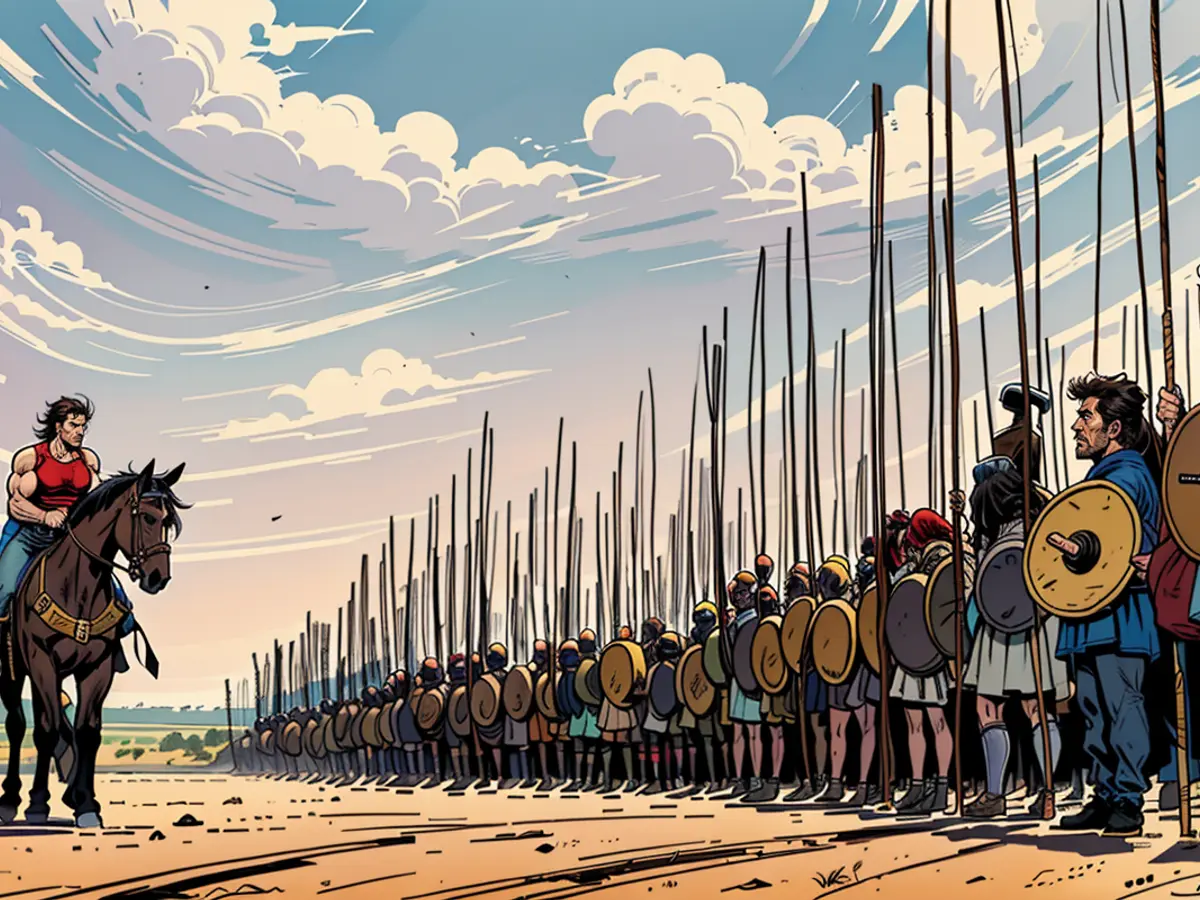Ancient warfare - The Macedonian phalanx - Alexander created a world empire with hammer and anvil
Born was the Phalanx out of necessity. It was hardly possible otherwise, as the deeply layered formation achieved its effect as a collective. A caste of wealthy elite warriors had always rejected being part of the masses. When Philip II. ascended the Macedonian throne in 359 B.C., the country was in a sorry state. The people were impoverished, poorly equipped, and hardly trained. To become an excellent swordsman, a lifetime of training was required. So he came up with another idea. He equipped his soldiers with light armor and gave them a four to six meter long spear, the Sarissa. For a proud nobleman, the Sarissa was an unthinkable weapon, as it was completely worthless for an individual combatant. In hand-to-hand combat, the opponent could evade the unwieldy pike and then attack the carrier unimpeded, who also carried only a small shield. The Sarissa was effective in the masses. When several ranks thrust their spears and the tips formed a sharp point like that of an iron porcupine, the enemy could not reach the Macedonians with their swords. To effectively wield the Sarissa, strength and the ability to follow the formation's movements with iron discipline were necessary.
Only strong as a group
The length of the spears prevented the enemies from reaching the Macedonians with their swords. If the Sarissa was planted firmly in the ground at its butt end, it could catch an attack from cavalry and even chariots. To use it effectively, strength and the ability to follow the formation's movements with iron discipline were required.
Similar to the Roman shield-tortoise, the Phalanx was a compact formation that consisted of 16 ranks arranged in a deep column. An enemy saw five spearheads facing him. This covered only a small front width, but on this width, the Phalanx functioned like a hammer. Once set in motion, the formation was hardly stoppable, as the rear ranks pushed the front ranks forward. When everything went well, this formation broke the enemy line at several points. With the breaking of the line, the battle was decided in those days.
The weakness of the formation was its unwieldiness, but Philip overcame this through constant drill. His soldiers were able to change direction and depth of the formation quickly even in battle. It was difficult to attack the Phalanx at its weak points, the sides and the rear, due to this. They could march longer and faster than others.
Foundation of an Empire
With the Macedonian Phalanx, Philip's son and successor Alexander inherited the strongest and most disciplined infantry of the time. He perfected its use in the "Hammer and Anvil" tactic. A part of his army attacked the enemy in Phalanx formation, but did not try to throw him out of position, but only engaged him in combat. This "Anvil" tied up the enemy troops, which could no longer move freely. Then Alexander led his Elite troops, the Hetairoi (Companions), against a weak point in the enemy. The Hetairoi fought as shock cavalry on horseback. Alexander is said to have loved his war horse Bucephalus as a friend, accompanying him to all battles until his death.
The cavalry charged through the front lines, which the enemy could no longer confuse. Then the Hetairoi turned against the remaining enemy soldiers, who were now also heavily pressed by Alexander's other troops. The hammer struck, the enemy was trapped between it and the anvil. Alexander's great victories did not lead to a weakening of the enemy, but to the near-total destruction of his army.
Outmaneuvered in the End
The discipline of the Macedonians was decisive, and it was also crucial that the enemy's troops were less drilled in responding to movements in their formations. As soon as an enemy could coordinate faster on the battlefield through a shallower formation, the phalanx would face problems. Its short front width inevitably led to a short line. The era of the phalanx came to an end when the Macedonians met the Romans. The legionaries were just as disciplined and trained as the Macedonian infantry. However, their generals could move small groups of soldiers – manipules and cohorts – specifically on the battlefield, thus outmaneuvering the phalanx.
The Macedonian Phalanx, with its deep layered formation, was a significant contribution from Macedonia to military strategy. Philip II's reforms transformed the phalanx into an effective weapon for his empire.
After Philip's reign, his son Alexander inherited this disciplined and powerful infantry, which played a crucial role in expanding the Macedonian Empire.







